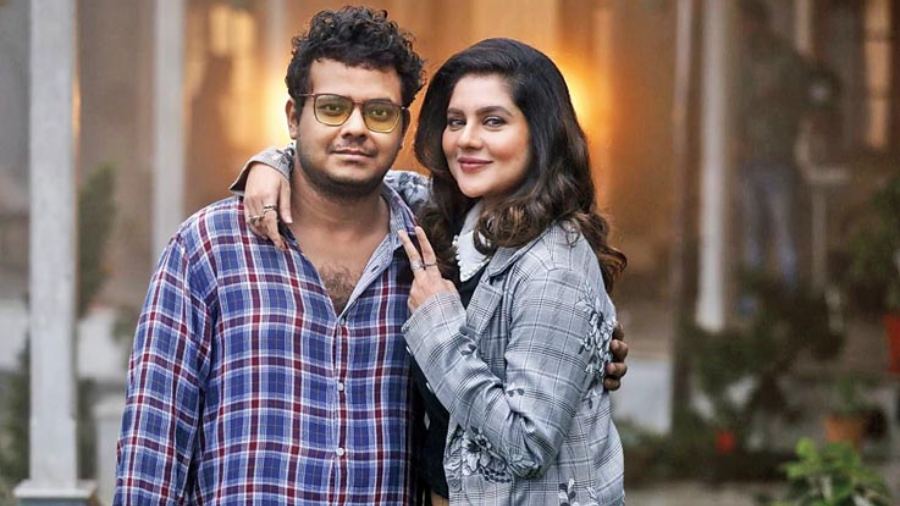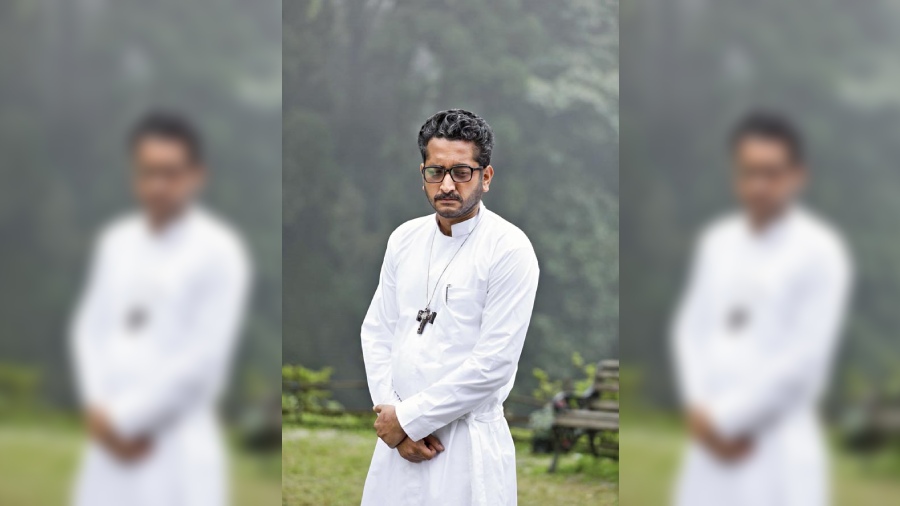Film-makers like us are always innovating with techniques to create a wonderful visual and heighten the drama on screen. Watching rainfall on screen can be a visual treat. Along with the soothing ambience, the sound design of the rain makes it a tranquil experience. However, creating such a mood or shooting in actual rain is quite a tough challenge for a production unit.
Creating artificial rain using rain machine is one thing but shooting in the monsoon season is a different ball game altogether.
One has to keep a number of things in their logistics and calculation such as protecting the filming gear, making sure that the rain is visible by using lighting techniques such as using backlight or framing against contrasting objects to capture the clarity of the rain.
In many cases, the original scene may not have rain but due to weather conditions we need to shoot and incorporate such elements by on-set decisions.
In my recent film Jotugriho, which will release this year, we shot at remote locations of north Bengal such as Takdah in the month of June-July. We had several precautions as rain was inevitable.
There were scenes in a dense pine forest where a child gets lost in a gloomy rainy weather and the key characters later search for the kid in similar conditions. That was really challenging. We all had raincoats, the camera body had waterproof cover and we had to ensure that the cast and crew can work in comfort so we carried tents, umbrellas and bug sprays as there were no actual roads, only muddy terrains and trails filled with insects and so on.
We set up a makeshift make-up zone there as well and had extra materials in hand in case the rain washed out the special effects make-up as we were shooting a horror scene. Moreover, double set of costumes were kept in store in case rain or mud spoiled the first set and we needed to reset the scene.
Another challenge is to keep up with the lighting conditions. It has happened quite a few times that the sun has come up even during a gloomy day and we had to stop the shoot to maintain light continuity.
Capturing the details of rain particles is a trick. In case we are not using a rain rig and trying to capture real rain, the shutter speed needs to be controlled in a manner so that rain and dust particles are clearly captured, otherwise even if it rains the shot will fail to produce the necessary image on screen. A higher shutter speed is recommended.
While shooting a scene in a rainy weather, we had the sun come up in the middle of the scene. We roughly calculated the course of the sun and put a number of devices to block the sun out from the zone of the shot.
Safety is of utmost importance as any water damage can cause electric malfunction and damage costly equipment. The lens need to be covered and taken care to avoid fog and condensation issues. All lights need to be covered by rain hats, connections are insulated, the crew needs to wear insulated soles and so on. We do not want any accident to happen from short circuit or grounding error. The battery backup is also an important factor in our check list.
The actors do enjoy filming in such weather, although monsoon shoots add up to production time and actors need to change costumes and reset their make-up multiple times. But the energy level remained high and the shoot atmosphere resonated with positive energy.
During a scene it may happen that the rain has stopped for a while and the ground, trees etc have dried up. We need to have wet downs for such scenario and artificially spray water on the road, leaves, rocks and even on artistes to continue the shot. Sometimes even after shooting in real rain, we sometimes add CG rain in the post to enhance the image.
While shooting in the dense forest with Bonny, Parambrata, Paayel, Piyali and others, we had quite a number of roadblocks but we enjoyed the challenge to achieve our deadline.
Paramda used a special make-up to play a middle-aged priest and therefore the rainy weather sometimes caused the make-up to be retouched at times during shoot. He was wearing an all-white costume and that needed to be maintained clean, so we had double costumes.
During a chase sequence, we found four-five of us have been attacked by leeches in the jungle. Bonny pulled out a large one from inside his boots. We don’t yet know how it managed to slip so far inside and it was there for quite sometime, given its swollen body when we found it. We continuously used salts, insect sprays to keep these kind of nuisance away but Bonny was attacked by leeches thrice during the shoot! All of this turned out to be a topic of fun conversations later on at our bungalow, after the day’s work, with the sound of rain in the mountains creating a chilling ambience all around us.
The texture of monsoon brings out the life of nature on the screen and is a treat to the senses for the audience. It evokes a magical experience altogether. Rainfall can be sweet with greenery and lushness and also it can be aggressive, full of fury. In an instant it can change the perception of an image. I really loved the manner in which the rain was depicted in Parasite, to mark the class divide by the reaction of the two strata of people. It can be a very powerful tool in storytelling but needs utmost care and caution to build such images. While in developing a normal scene, we do critical detailing to make the audience feel good about a shot, the element of rain helps to achieve it quite naturally.
There are expensive and inexpensive ways to deal with shoot in rain. Full-fledged production units use rain curtain contraption to ensure the high volume of rain visible in shot. Other techniques include adding milk in artificial rain to lower the translucency. From the days of my short film where I used DIY spray cans in close-up shots to create rain to feature production where we used proper rain gear in the mountains, all in all it has been a fun journey.
Although my favourite season is winter, I don’t mind plunging in to shoot in the rain from time to time. Films like Braveheart, Shawshank Redemption and so on have cleverly created ways to provide the effect of a heavy downpour and images from these keep inspiring me to storyboard such elements to add a profound effect to the scene. The full credit must go to the souls working tirelessly behind the scenes with a lot of risk to simulate or record the dollops of rain from above.

Saptaswa and Paayel
A few pointers for shooting in the monsoon
1) Keep extra time in hand for the planned shoot as there will be many delays and retakes, equipment issues due to the moisture.
2) If water drops fall on the lens it’s better to dab it with a clean piece of cloth rather than to wipe it. Also it’s best to keep the lens safe from fogging.
3) Avoid sunlight in the shot as it ruins the effort of creating a murky and gloomy mood and also it prevents the rain drops to be seen properly when you are using artificial means of downpour.
4) Extra battery, insulating electrical points and maintaining continuity in the wide shots are of utmost importance. You need to always look out for zones which are visible in consecutive shots and if the rain (natural) is irregular then you need to wet down areas to maintain continuity.
